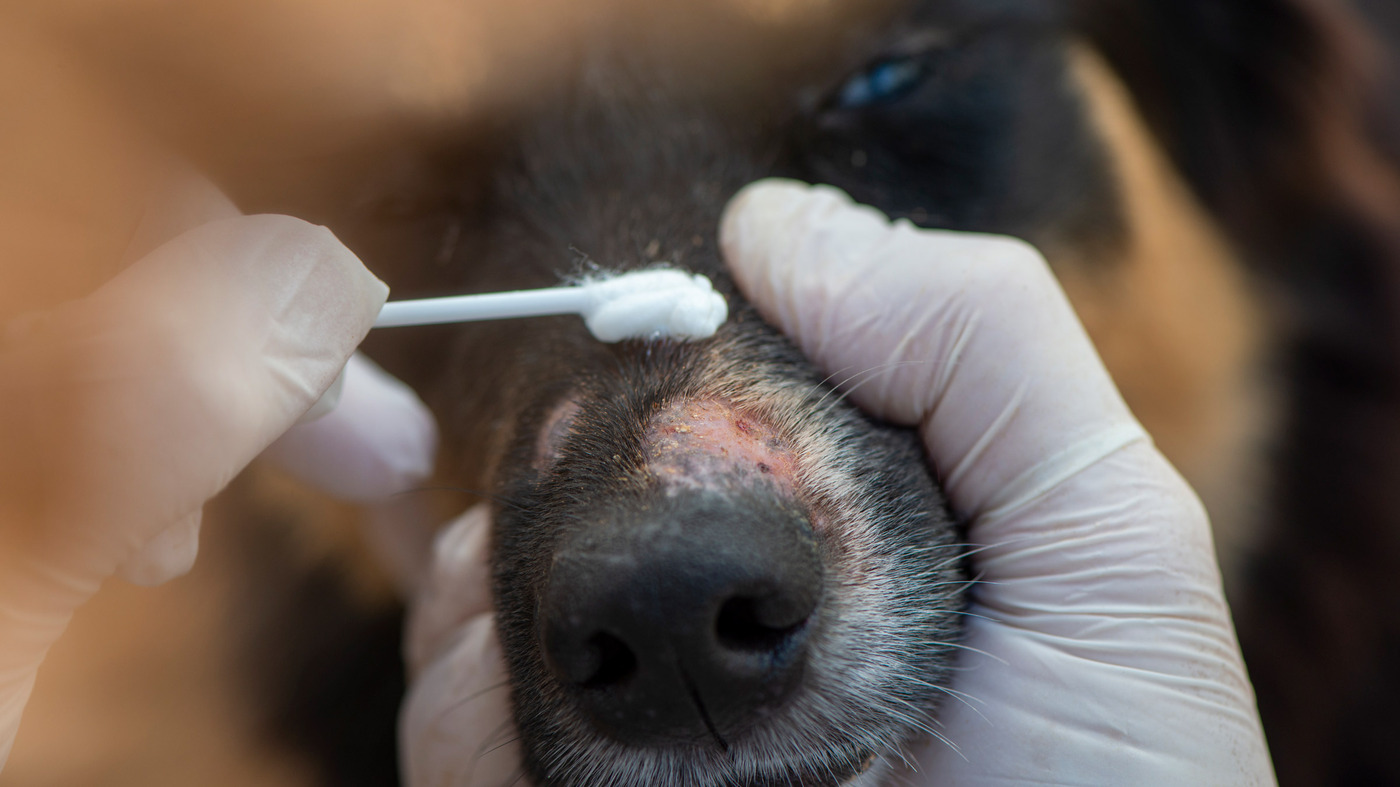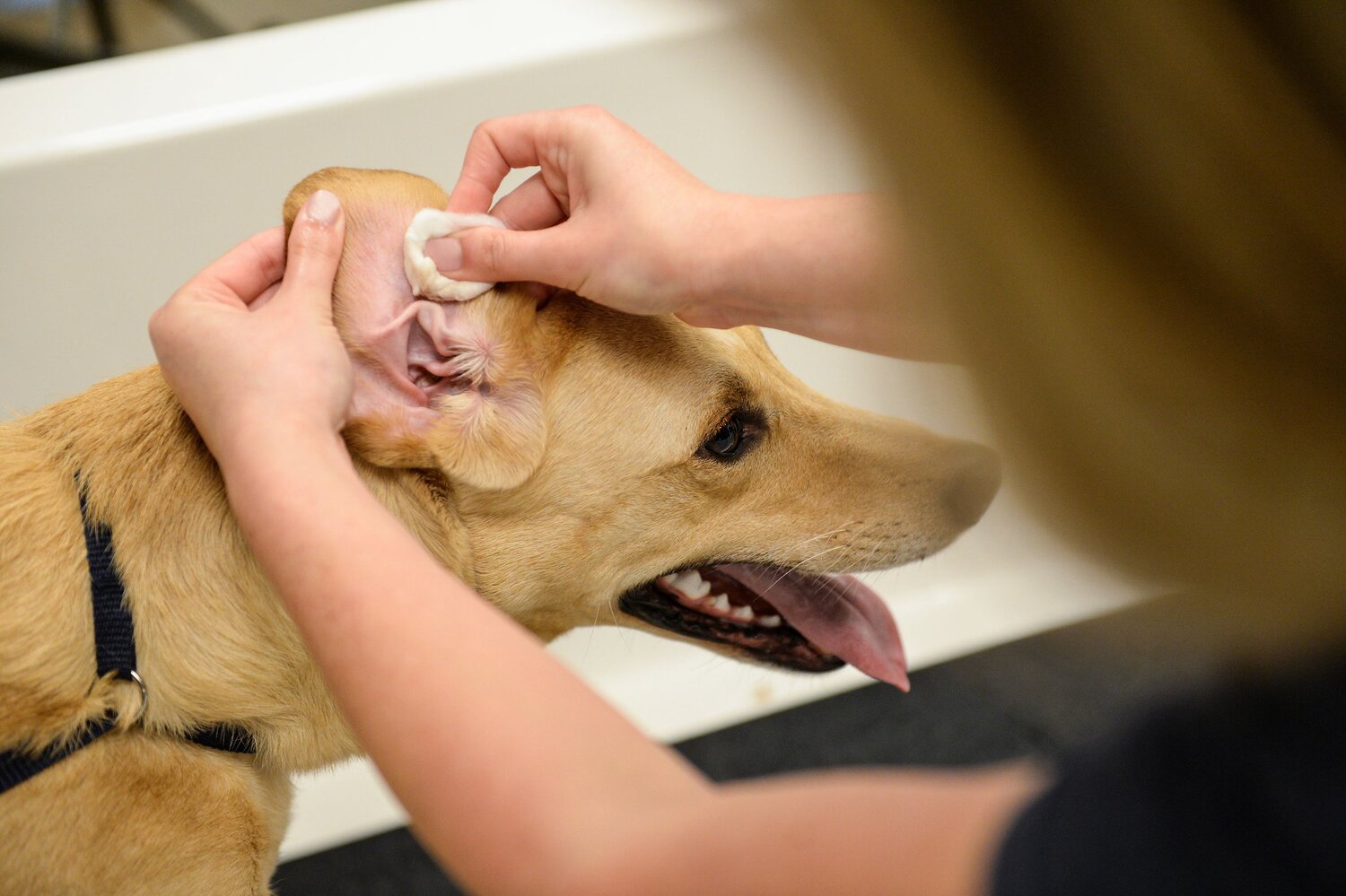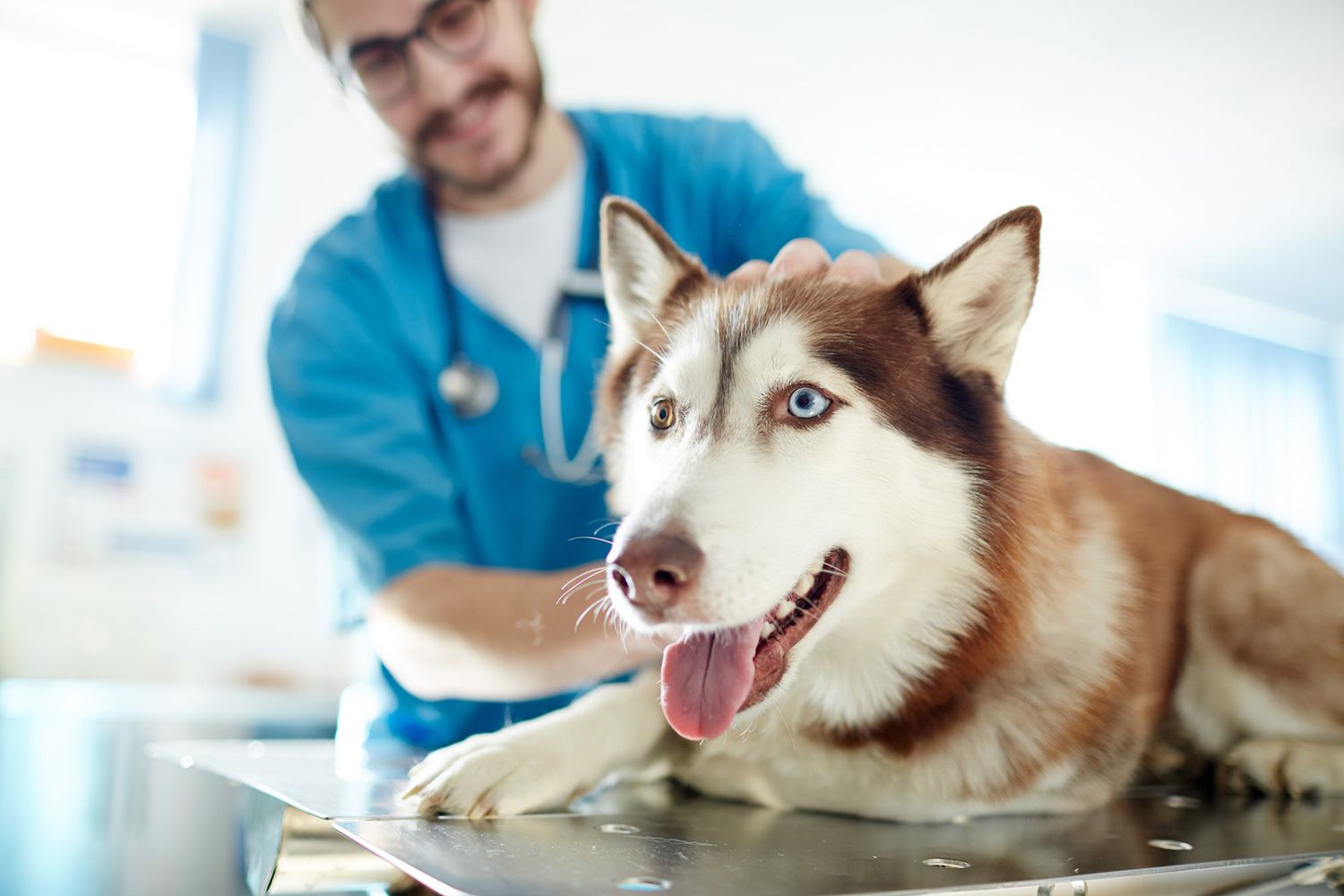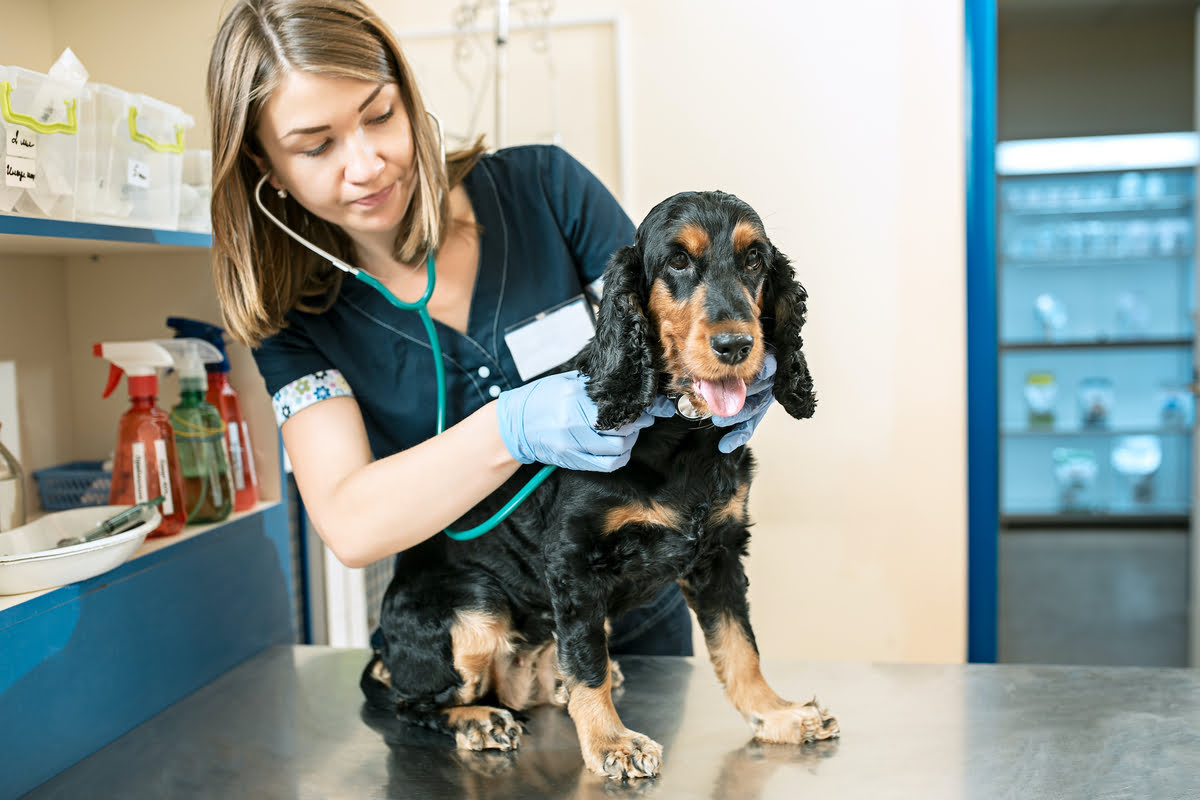Home>Health & Wellness>Common Health Issues>How To Treat Dog Parasite Symptoms On Skin


Common Health Issues
How To Treat Dog Parasite Symptoms On Skin
Modified: March 1, 2024
Learn how to recognize and treat common health issues in dogs, including parasite symptoms on the skin. Find effective solutions to keep your furry friend healthy and happy.
(Many of the links in this article redirect to a specific reviewed product. Your purchase of these products through affiliate links helps to generate commission for Pawsomeoldies.com, at no extra cost. Learn more)
Table of Contents
Introduction
When it comes to our furry companions, their health and well-being are of utmost importance. As responsible pet owners, it's crucial to be vigilant about any signs of discomfort or illness in our dogs. One common health issue that can affect our canine friends is skin parasites. These pesky intruders can cause a range of symptoms, from mild irritation to more severe skin problems. Understanding how to identify and treat dog parasite symptoms on the skin is essential for ensuring our pets' comfort and happiness.
Skin parasites can be a source of great discomfort for dogs, leading to incessant itching, skin inflammation, and even hair loss. As pet owners, it's our duty to recognize the signs of these pesky parasites and take prompt action to alleviate our furry friends' suffering. By gaining a deeper understanding of the symptoms, causes, and treatment options for dog skin parasites, we can provide our beloved pets with the care and attention they deserve.
In this comprehensive guide, we will delve into the world of dog parasite symptoms on the skin, exploring the common culprits behind these issues and discussing effective treatment methods. By the end of this article, you will be equipped with the knowledge and tools to identify, address, and prevent skin parasite infestations in your canine companions. Let's embark on this enlightening journey to ensure the well-being of our beloved dogs.
Read more: How To Treat Dogs With Skin Allergies
Understanding Dog Parasite Symptoms on Skin
Skin parasites can cause a range of distressing symptoms in dogs, often leading to discomfort and irritation. Recognizing these symptoms is crucial for early intervention and effective treatment. Here are some common signs of dog parasite symptoms on the skin:
-
Excessive Scratching: Dogs infested with skin parasites often exhibit relentless scratching or biting at their skin. This behavior is a clear indicator of discomfort and can lead to skin damage and hair loss.
-
Skin Irritation: Parasite infestations can cause redness, inflammation, and irritation on the dog's skin. This may be accompanied by the presence of small bumps, rashes, or scabs, indicating an underlying issue that requires attention.
-
Hair Loss: Certain skin parasites can lead to hair loss in affected areas. This can be particularly distressing for both the dog and the owner, signaling the need for prompt intervention.
-
Visible Parasites: In some cases, the presence of visible parasites on the dog's skin or fur may be observed. These could include ticks, fleas, or mites, indicating the need for immediate action to address the infestation.
-
Restlessness: Dogs experiencing discomfort due to skin parasites may display restlessness or agitation. They may struggle to find relief from the itching and discomfort, leading to behavioral changes that are noticeable to their owners.
-
Skin Odor: Skin parasites can contribute to an unpleasant odor emanating from the dog's skin. This distinct smell may be indicative of an underlying parasitic infestation that requires attention.
Understanding these symptoms is essential for identifying potential skin parasite issues in dogs. By remaining vigilant and observant, pet owners can promptly address these symptoms and seek appropriate treatment to alleviate their pets' discomfort.
Identifying Common Parasites
Identifying the specific parasites responsible for skin issues in dogs is crucial for effective treatment. Several common parasites can infest a dog's skin, causing a range of symptoms and discomfort. Understanding these culprits is essential for pet owners to take appropriate action. Here are some of the most prevalent skin parasites that can affect dogs:
1. Fleas
Fleas are among the most notorious skin parasites that afflict dogs. These tiny, wingless insects feed on the host's blood and can cause intense itching, skin irritation, and allergic reactions. Flea infestations often lead to visible signs such as flea dirt (black specks) on the dog's skin, along with excessive scratching and hair loss.
2. Ticks
Ticks are external parasites that attach themselves to a dog's skin and feed on their blood. These arachnids can transmit various diseases and cause skin irritation at the bite site. Identifying ticks on a dog's skin requires careful inspection, as they can be found in hidden areas such as the ears, between toes, and around the neck.
Read more: How To Treat Coccidia Parasite In Dogs
3. Mites
Mites are microscopic parasites that can cause a range of skin issues in dogs. Sarcoptic mange, caused by Sarcoptes scabiei mites, leads to intense itching, hair loss, and skin inflammation. Ear mites, on the other hand, can cause ear irritation and discomfort. Identifying mite infestations may require a veterinarian's expertise and diagnostic tests.
4. Lice
Although less common than fleas and ticks, lice infestations can occur in dogs, leading to itching, skin irritation, and hair loss. Lice are visible to the naked eye and can be found clinging to the dog's fur. Prompt identification and treatment are essential to prevent the spread of lice infestations.
5. Demodex Mites
Demodex mites are a type of mite that naturally resides in the hair follicles of dogs. However, under certain conditions, such as a weakened immune system, these mites can multiply excessively, leading to a condition known as demodectic mange. This can cause hair loss, skin inflammation, and discomfort for the affected dog.
By familiarizing themselves with these common skin parasites, pet owners can be better equipped to identify potential infestations and seek appropriate veterinary care. Early detection and intervention are key to effectively addressing skin parasite issues in dogs, ensuring their well-being and comfort.
Treating Dog Parasite Symptoms on Skin
Effective treatment of dog parasite symptoms on the skin is essential for alleviating discomfort and promoting the well-being of our beloved pets. When faced with skin parasite issues in dogs, prompt and targeted intervention is crucial. Here are several approaches to treating dog parasite symptoms on the skin:
-
Topical Treatments: Utilizing topical treatments such as medicated shampoos, sprays, or spot-on treatments can effectively target and eliminate skin parasites. These products are designed to kill fleas, ticks, and mites while soothing the dog's skin and reducing inflammation. It's important to follow the instructions provided by the veterinarian or product manufacturer for safe and effective application.
-
Oral Medications: In cases of severe infestations or specific parasite-related conditions, veterinarians may prescribe oral medications to combat skin parasites. These medications can target parasites internally, providing comprehensive treatment for the affected dog. It's crucial to administer these medications as directed and to complete the full course of treatment to ensure the parasites are effectively eradicated.
-
Environmental Control: Treating dog parasite symptoms on the skin also involves addressing the dog's living environment. Regularly washing and disinfecting bedding, grooming tools, and living spaces can help eliminate parasites and prevent reinfestation. Additionally, using household flea and tick control products can contribute to a parasite-free environment for the dog.
-
Regular Grooming: Maintaining a regular grooming routine for the dog can aid in managing and preventing skin parasite issues. Brushing the dog's coat, inspecting for parasites, and keeping the fur clean and well-maintained can help reduce the risk of infestations and promptly identify any potential issues.
-
Consultation with a Veterinarian: Seeking professional guidance from a veterinarian is crucial when treating dog parasite symptoms on the skin. Veterinarians can accurately diagnose the specific parasite infestation and recommend the most effective treatment options tailored to the dog's individual needs. They can also provide valuable insights into preventive measures to safeguard the dog against future infestations.
By employing these treatment approaches in a comprehensive and diligent manner, pet owners can effectively address dog parasite symptoms on the skin, providing their furry companions with relief from discomfort and promoting overall skin health.
Remember, early intervention and consistent treatment are key to successfully managing and eradicating skin parasite issues in dogs. By prioritizing the well-being of our pets and taking proactive measures, we can ensure that they enjoy a comfortable and parasite-free existence.
Preventing Future Infestations
Preventing future infestations of skin parasites in dogs is paramount to safeguarding their well-being and ensuring a comfortable and healthy life. After addressing existing parasite symptoms, implementing preventive measures can significantly reduce the risk of reinfestation and promote long-term skin health for our beloved pets. Here are several proactive steps that pet owners can take to prevent future infestations:
-
Regular Parasite Prevention Products: Utilizing veterinarian-recommended flea, tick, and mite prevention products is a fundamental aspect of preventing future infestations. Monthly topical treatments, oral medications, or collars designed to repel parasites can provide ongoing protection for dogs, effectively minimizing the risk of infestation.
-
Environmental Maintenance: Maintaining a clean and hygienic living environment for the dog is essential in preventing parasites from taking hold. Regularly vacuuming carpets, washing bedding, and keeping outdoor areas tidy can help eliminate potential breeding grounds for parasites, reducing the likelihood of infestation.
-
Routine Grooming and Inspection: Establishing a consistent grooming routine that includes thorough inspection for parasites is crucial for early detection and prevention. Regularly brushing the dog's coat, checking for ticks or fleas, and promptly addressing any signs of infestation can prevent parasites from establishing a foothold on the dog's skin.
-
Regular Veterinary Check-ups: Scheduling routine veterinary check-ups allows for comprehensive health assessments, including skin examinations. Veterinarians can provide guidance on parasite prevention strategies tailored to the dog's specific needs, ensuring that preventive measures are effectively implemented.
-
Awareness of High-Risk Environments: Being mindful of high-risk environments for parasite exposure, such as wooded areas, tall grass, or areas with wildlife, can help pet owners take proactive measures to prevent infestations. Limiting the dog's exposure to such environments or using preventive measures, such as repellent sprays, can mitigate the risk of parasite encounters.
-
Education and Awareness: Staying informed about the seasonal prevalence of parasites in specific regions and being aware of common parasite hotspots can empower pet owners to take proactive preventive actions. Understanding the behaviors and habitats of different parasites can aid in implementing targeted preventive measures.
By incorporating these preventive strategies into their routine care and maintenance of their dogs, pet owners can significantly reduce the risk of future infestations, ensuring that their furry companions enjoy a parasite-free and comfortable existence.
Remember, prevention is key to promoting the long-term health and well-being of our dogs. By taking proactive measures and remaining vigilant, pet owners can create a safe and parasite-resistant environment for their beloved canine companions.
Conclusion
In conclusion, the well-being of our canine companions is intricately linked to their skin health, and addressing dog parasite symptoms on the skin is a crucial aspect of responsible pet ownership. By understanding the common symptoms, identifying prevalent parasites, and implementing effective treatment and preventive measures, pet owners can ensure that their dogs enjoy a comfortable and parasite-free existence.
Recognizing the signs of skin parasite infestations, such as excessive scratching, skin irritation, and visible parasites, empowers pet owners to take prompt action and seek appropriate veterinary care. Identifying common culprits, including fleas, ticks, mites, lice, and demodex mites, provides valuable insights into the specific challenges that dogs may face.
Effective treatment of dog parasite symptoms on the skin involves a multi-faceted approach, encompassing topical treatments, oral medications, environmental control, regular grooming, and consultation with a veterinarian. By diligently addressing existing infestations, pet owners can alleviate their dogs' discomfort and promote overall skin health.
Furthermore, preventing future infestations is paramount in safeguarding the well-being of dogs. Through the consistent use of parasite prevention products, environmental maintenance, routine grooming and inspection, regular veterinary check-ups, awareness of high-risk environments, and education, pet owners can significantly reduce the risk of reinfestation.
By prioritizing the health and comfort of our furry friends and taking proactive measures, we can create a safe and parasite-resistant environment for our beloved dogs. Ultimately, the bond between humans and dogs is enriched when our pets are free from the discomfort and distress caused by skin parasites, allowing them to thrive and enjoy a vibrant and fulfilling life.
In essence, by equipping ourselves with knowledge, vigilance, and a proactive mindset, we can ensure that our dogs receive the care and attention they deserve, free from the burden of skin parasite symptoms. Let's continue to be steadfast advocates for the well-being of our canine companions, nurturing a harmonious and joyful relationship built on love, care, and a commitment to their health.













